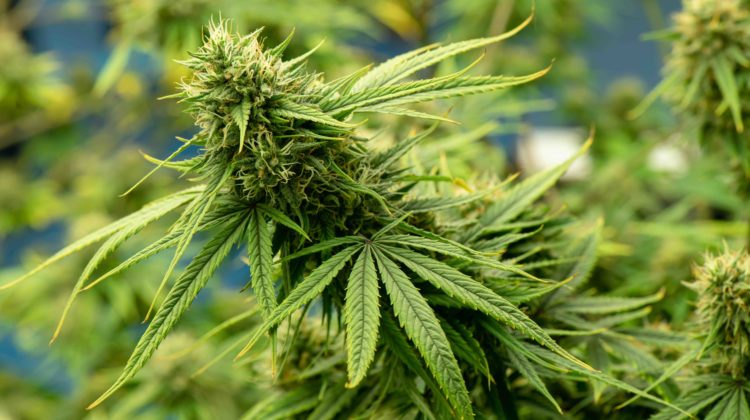
Image by wosunan
The Process of Getting Cannabis into the Stores
As a consumer, you might be wondering how dispensaries get cannabis into their stores? The answer might surprise you since it’s not as simple as just growing and selling the product.
Dispensaries have to go through a rigorous process to ensure that the products they stock on their shelves are safe for consumers, and compliant with state laws.
Getting Cannabis from Growers
The process of getting cannabis from the cultivators to the dispensary is complicated and lengthy. There are several steps involved, with the first beginning with the cannabis grower. They must obtain a cultivation license from their state regulatory board.
Some of the hoops cultivators have to jump through in order to obtain their license includes:
- Abiding by specific state laws, regulations, permitting requirements and zoning restrictions for the area they intend to cultivate in
- File a lengthy application and submit any required fees
- Provide proof of identity, corporate documents, industry experience, criminal history record, and anything else their state might require
- Have an inspection by a licensing authority
Growers must adhere to these regulations to get a license for cultivating cannabis. In some states, like California, a licensed distributor is required to physically move the cannabis from the cultivation site to the dispensary.
Nevada uses Metrc, which is a seed-to-sale regulatory tracking system. This means that if you snag the best Las Vegas weed deals, you buy products made from plants that were tracked from the growth stage to the eventual retail sale.*
In states like New York, cultivators are legally allowed to distribute their cannabis directly to the dispensaries. While they can do this, they can only move cannabis flowers, not manufactured products like edibles, tinctures or suppositories.
Before the cannabis can hit the shelves, the cultivator or manufacturer must ensure quality standards. That means that each product must be tested by a third-party laboratory before being accepted by a licensed dispensary.
Once the cannabis has passed state testing requirements, it can be accepted and sold.
In most states, all products are tracked and traced every step of the way, ensuring safety as it goes into the customer’s hands.
Obtaining cannabis products requires commitment and adherence to strict guidelines both on behalf of the cultivators, processors/manufacturers, and dispensaries in order to ensure consumer safety.
Cannabis Product Packaging
When it comes to cannabis products, sustainable packaging has been racing to the forefront of standard practice.
There are a variety of sustainable materials being used from paperboard boxes to biodegradable bags made from sustainable sources like hemp.
Makers of cannabis products are finding innovative ways to pack their goods in much more sustainable materials than ever before.
Finished product packaging such as child-resistant containers, and bottles, can be reused or recycled by consumers. Some dispensaries even offer discount incentives if you bring back your previous packaging for recycling.
As companies increase focus on sustainable options, it’s safe to say that sustainable packaging is here to stay when it comes to the cannabis industry.
Labeling Requirements
As cannabis has experienced a huge surge in popularity in recent years, each state has labeling requirements that must be displayed on every product.
Some of the information listed on each product includes; active ingredients, cannabinoid content, net weight or volume, and the name and address of the licensed producer or processor.
The requirements have been created with consumer safety and education in mind. The labels are set up so that customers know exactly what they’re purchasing before making a decision, allowing them to make sure they select a product that suits their needs.
Transporting Cannabis Across State Lines
Cannabis is still listed as a Schedule I drug on the federal level. That means transporting any products across state lines is strictly prohibited.
There are current efforts underway by lawmakers and organizations to change this outdated policy.
While discussion continues with no sign of resolution in sight, many supporters remain hopeful for access to legal cannabis on a federal level in the years coming.
This would enable consumers in legalized states to have access to high-quality cannabis products from places like California.
Track and Trace Systems for Inventory
Track and trace systems are becoming increasingly important in the industry due to their capabilities of seed-to-sale traceability and quality assurance. This is initiated by the state government to help reduce illegal trade.
A seed-to-sale tracking system logs all activity of a product’s journey from its start as a seed in the ground, to when it reaches its final retail owner for a sale.
Not only do these systems provide information on each transaction, but it also guarantees product safety, and decreases complications or discrepancies between various parties involved.
With such high security measures and accurate record keeping, cannabis tracking systems are essential in recreational states throughout the U.S.
When buying cannabis, always buy from a legal source to ensure that your product is safe and tested. Given the rigorous process involved from seed-to-sale, once the product arrives at the dispensary, it’s safe to assume it meets state safety standards, and is approved for your use or consumption.
*This article contains a marketing sponsorship*



We the Patients want DIRECT BUYS from the OG Growers please 🙂
We do NOT want any more dispensaries 🙁
We the Patients hope for places we can go and talk about our “salad bar”/Polyculture recipes for our Wellness with other patients please 🙂
Please help END VACCINE ADDICTION with WHOLE PLANT botanical medicines 🙂
“Chemical free” to the best of our abilities and without punishing ourselves please 🙂